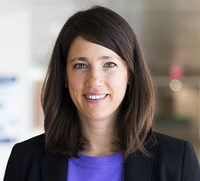
Kathleen Sienko
Arthur F. Thurnau Professor, Mechanical Engineering; Miller Faculty Scholar Associate Professor, Mechanical Engineering; Miller Faculty Scholar Associate Professor, Biomedical Engineering
Kathleen H. Sienko is an Arthur F. Thurnau Professor, Miller Faculty Scholar, and Associate Professor of Mechanical Engineering and Biomedical Engineering at the University of Michigan (U-M). She earned her Ph.D. in 2007 in Medical Engineering and Bioastronautics from the Harvard-MIT Division of Health Science and Technology, and holds an S.M. in Aeronautics & Astronautics from MIT and a B.S. in Materials Engineering from the University of Kentucky. She co-directs the U-M Center for Socially Engaged Design and directs both the Global Health Design Initiative (GHDI) and the Sienko Research Group. She is the recipient of an NSF CAREER award and several teaching awards including the UM Teaching Innovation Prize, UM Undergraduate Teaching Award, and UM Distinguished Professor Award. While at MIT, she was a winner of the MIT $50K Entrepreneurship Competition.
Dr. Sienko has initiated several innovative global experiential project learning programs at the Department, College of Engineering, and University levels using an educational framework and activities focused on design ethnography and human-centered, context-centered, and co-creative design processes. These processes require a deep understanding of the stakeholders and a product’s context of use. Recognized as an emerging model for human- and context-centered design, the U-M GHDI has provided ~350 engineering and non-engineering students with opportunities to identify and define global health challenges and develop appropriate solutions (>70 projects); a subset of these projects have involved multinational medical device company partners. Through participation in the GHDI programs, students observe and interview healthcare providers at field sites (e.g., Ghana, Ethiopia, Kenya, China), establish intercultural and interdisciplinary communication skills, develop clinical literacy in thematic areas (e.g., ObGyn), co-identify unmet needs and formulate need statements, gain an understanding of the local and broader contexts of design, generate preliminary user requirements and engineering specifications for a selected design project topic, and develop concept solutions. To date, students have designed medical devices, simulators, and health technologies, and have disseminated their technologies through start-up companies and their scholarly work through conference presentations, journal articles, and student design competitions.
Ph.D. Medical Engineering and Bioastronautics from the Harvard-MIT Division of Health Sciences and Technology (HST) program; S.M. Aeronautics & Astronautics MIT; B.S. University of Kentucky.
